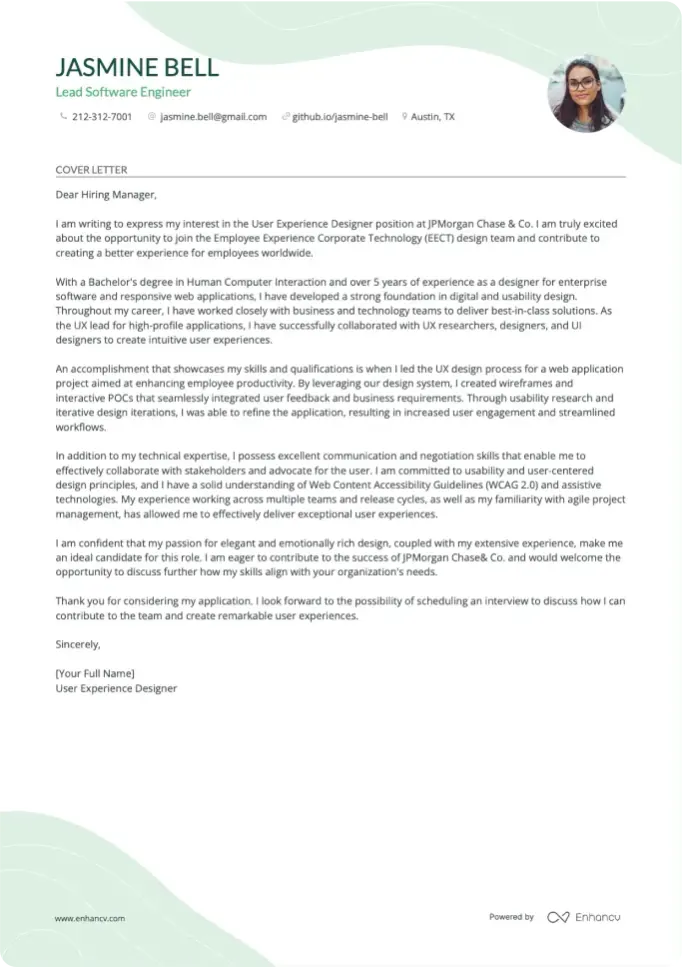Navigating the waters of job applications, you've likely stumbled upon a common hurdle: crafting the perfect motion graphics cover letter. It isn't just a repeat of your resume; it's your chance to highlight a professional triumph that you're proud of, weaving it into a compelling narrative. Striking the right balance between formality and genuine flair—without resorting to clichés—is crucial. And remember, brevity is your ally; keep your story to a single, impactful page.
- Writing the essential motion graphics cover letter sections: balancing your professionalism and personality;
- Mixing storytelling, your unique skill set, and your greatest achievement;
- Providing relevant (and interesting) information with your motion graphics cover letter, despite your lack of professional experience;
- Finding the perfect format for your[ motion graphics cover letter, using templates from industry experts.
Leverage the power of Enhancv's AI: upload your resume and our platform will map out how your motion graphics cover letter should look, in mere moments.
If the motion graphics isn't exactly the one you're looking for we have a plethora of cover letter examples for jobs like this one:
- Motion Graphics resume guide and example
- Design Manager cover letter example
- UX UI Designer cover letter example
- Electrical Designer cover letter example
- Architectural Designer cover letter example
- Logo Designer cover letter example
- Sound Designer cover letter example
- Concept Art cover letter example
- Digital Designer cover letter example
- Packaging Designer cover letter example
- 3D Animator cover letter example
Motion Graphics cover letter example
Vanessa Ford
Kanzas City, MO
+1-(234)-555-1234
help@enhancv.com
- Emphasize relevant experience specific to the job role: Mention of leading a collaboration with graphic designers and the execution of motion graphic elements for a high-profile client showcases the candidate's capacity to handle large-scale, industry-relevant projects.
- Link personal values with company values: The applicant's mention of their alignment with the company's commitment to innovation and design excellence reflects a personal and professional fit for the company culture.
- Highlight technical skills and software proficiency: References to proficiency in content management systems and design software provide concrete evidence of the candidate's capability to perform the day-to-day tasks required in the role.
- Express enthusiasm for the company's work: A genuine expression of interest in the specific work that the company does shows the hiring manager that the candidate is passionate about joining their team and contributing to their projects.
Five tips on formatting your motion graphics cover letter
Do you want to make a good impression on recruiters and, at the same time, follow the best industry advice on writing your motion graphics cover letter?
Make sure to include the following:
- Header and Salutation;
- Introductory paragraph;
- Body paragraph;
- Closing paragraph;
- Signature (this one is up to you).
Remember to use the same modern, simple font for your motion graphics cover letter as you did for your resume (e.g. Lato, Rubik, etc.)
Ensure your motion graphics cover letter is single-spaced and is wrapped around a one-inch margin, like in our cover letter templates.
Once completed, use our cover letter builder to export your motion graphics cover letter in the best format to keep your information intact - PDF.
At the end of the day, your motion graphics cover letter won't be assessed by the Applicant Tracker System (ATS) software, but by the recruiters. Your information should thus be legible, organized, and follow a structured logic.
The top sections on a motion graphics cover letter
Header (including contact information): This section should include your name, address, phone number, email, and the date, ensuring that the recruiter can easily reach out to you and knows the letter is up to date.
Opening Greeting: Address the recruiter or hiring manager by name to demonstrate your attention to detail and personalise your application, showing you've researched who is in charge of hiring.
Introduction: Present your background in motion graphics, summarising your experience with relevant software and types of projects, and expressing your enthusiasm for the specific role you are applying to, which sets the stage for the detailed evidence of your skills that will follow.
Body (including specific skill set and project experiences): Detail your relevant experience with motion graphics, the techniques you excel in, specific tools you use (like Adobe After Effects, Cinema 4D, etc.), and how your past projects have had an impact, tailoring this to the job description to show you're a perfect match for the position.
Closing and Call to Action: Finish by summarising your suitability for the role, express eagerness for a personal interview, and provide a proactive next step, such as stating when you'll follow up, to show your dedication and interest in the position.
Key qualities recruiters search for in a candidate’s cover letter
Proficiency in Software: Expertise in After Effects, Cinema 4D, Premiere Pro, Illustrator, and Photoshop is crucial as these are the primary tools used for creating motion graphics. Recruiters look for candidates who can smoothly navigate these programs to create high-quality work.
Understanding of Design Principles: A strong grasp of design fundamentals such as composition, color theory, typography, and visual hierarchy is important to produce visually appealing and effective motion graphics.
Creativity and Originality: The ability to conceive and execute original concepts is highly valued. Recruiters seek individuals who can think outside the box and bring fresh, innovative ideas to the table.
Storytelling Skills: The capability to tell a story through animation and visual design. Motion graphics often require conveying complex information or narratives in an engaging and accessible way.
Attention to Detail: Meticulousness is essential due to the precision required in timing, motion, and visual details that make animations come to life. Recruiters favor applicants with a keen eye for the minutiae in design and animation.
Time Management and Ability to Meet Deadlines: In a fast-paced industry, being able to manage multiple projects efficiently and deliver high-quality work on schedule is a must. Recruiters prioritize candidates who have a proven track record of meeting tight deadlines without sacrificing quality.
How to start your motion graphics cover letter: with a greeting, of course
Have you ever considered just how powerful a personalized salutation can be?
We sure have news for you! Your motion graphics cover letter should start with the right salutation to recruiters, nurturing a sense of respect and individuality.
Greet recruiters by using their first name (e.g. "Dear Tom" or "Dear Patricia") if you've previously established contact with them.
Otherwise, opt out for the less familiar, "Dear Ms. Peaches" or "Dear Ms Kelsey", if you've found the recruiter's name on LinkedIn or a corporate website.
"To whom it may concern" is never a good option, as it creates a sense that you've been sending out your motion graphics cover letter to anyone. Instead, use "Dear HR team" or "Dear (company name) recruiter" for a feeling of exclusivity.
List of salutations you can use
- Dear [Hiring Manager's Name],
- Dear [Team or Department Name],
- Dear [Mr./Ms./Dr.] [Last Name],
- Dear Hiring Committee,
- Attention: [Specific Role Title] Hiring Manager
- Dear [Company Name] Recruiter,
The motion graphics cover letter introduction: focusing on your unique value, with a creative twist
You are not the only one wondering how to start your motion graphics cover letter. Those first two sentences introduce your profile and should be memorable.
No pressure.
When beginning your motion graphics cover letter, immediately point out the unique value of working with you. In other words, what you promise to bring to the role by using your past track record of success.
Start your motion graphics cover letter with a creative twist by telling a joke or stating something relatable. Select this type of introduction only if it aligns with the company culture.
Choosing your best achievement for the middle or body of your motion graphics cover letter
Now that you have the recruiters' attention, it's time to write the chunkiest bit of your motion graphics cover letter.
The body consists of three to six paragraphs that focus on one of your achievements.
Use your past success to tell a story of how you obtained your most job-crucial skills and know-how (make sure to back these up with tangible metrics).
Another excellent idea for your motion graphics cover letter's middle paragraphs is to shine a light on your unique professional value.
Write consistently and make sure to present information that is relevant to the role.
A sincere and original way to end your motion graphics cover letter
When writing their motion graphics cover letter, candidates tend to use one of these phrases, "Sincerely yours" or "I look forward to hearing from you".
Both statements show good manners, but your cover letter should end in a more actionable manner.
Write about:
- how you see yourself growing in the role/organization;
- the benefits you would bring about (you'd impress even more with tangible metrics);
- the next steps in the process (provide your availability for interviews).
What could you write about in your motion graphics cover letter when you have no experience
Candidates with zero professional experience often struggle to write their motion graphics cover letter.
You may lack experience, but your application could still be impressive when you focus on your strengths.
Consider your most relevant talents (and/or one achievement) that align with the role and help you stand out.
Perhaps you spent every summer volunteering at your local dog pound - think of the job-relevant skills this experience taught you.
Sharing your tangible career goals is another good strategy to stand out.
Key takeaways
Writing your motion graphics cover letter doesn't need to turn into an endless quest, but instead:
- Create an individual motion graphics cover letter for each role you apply to, based on job criteria (use our builder to transform your resume into a cover letter, which you could edit to match the job);
- Stick with the same font you've used in your resume (e.g. Raleway) and ensure your motion graphics cover letter is single-spaced and has a one-inch margin all around;
- Introduce your enthusiasm for the role or the company at the beginning of your motion graphics cover letter to make a good first impression;
- Align what matters most to the company by selecting just one achievement from your experience, that has taught you valuable skills and knowledge for the job;
- End your motion graphics cover letter like any good story - with a promise for greatness or follow-up for an interview.




